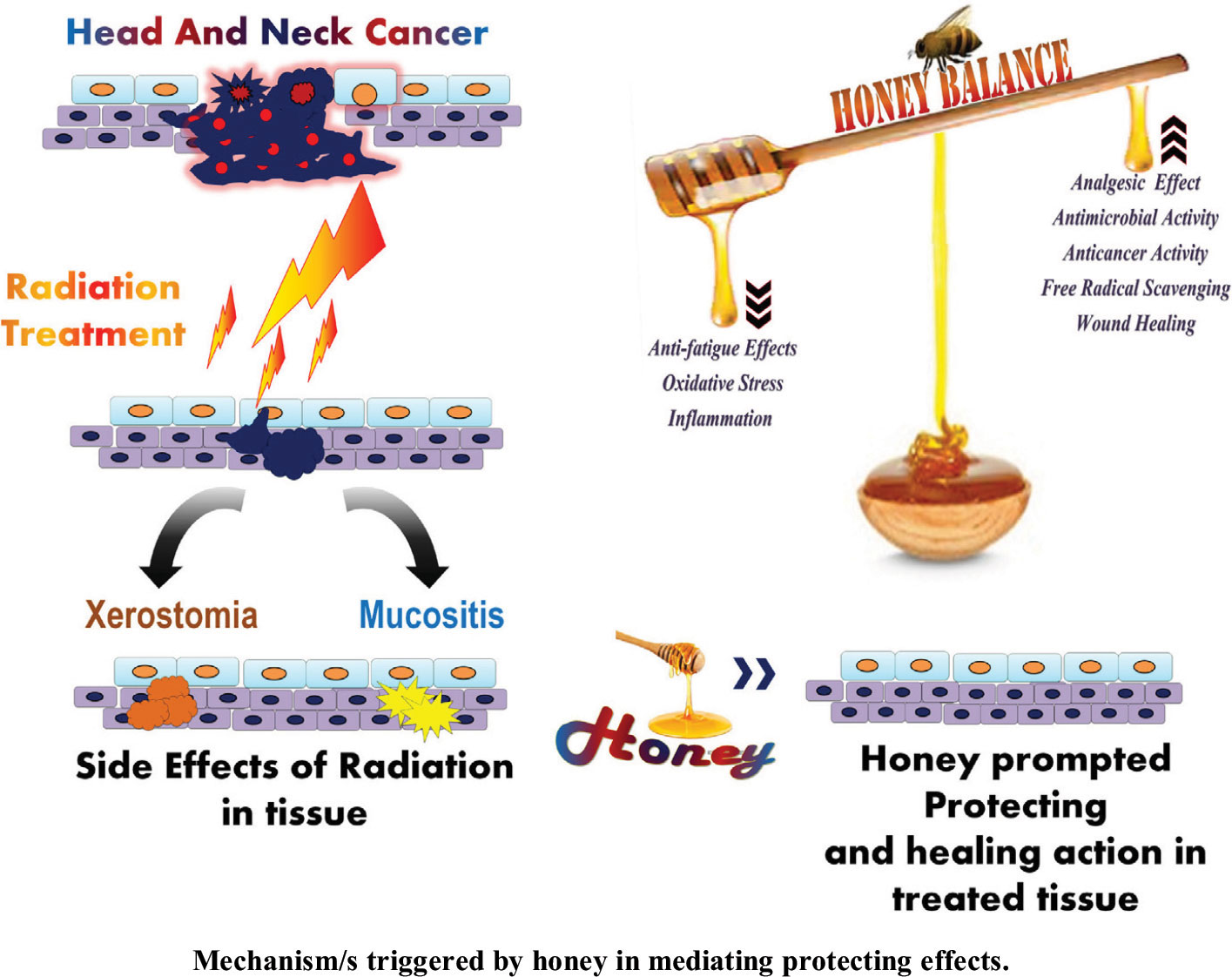Article Details
Usefulness of Honey as an Adjunct in the Radiation Treatment for Head and Neck Cancer: Emphasis on Pharmacological and Mechanism/s of Actions
Author(s):
Manjeshwar S. Baliga*, Suresh Rao, Sanath K. Hegde, Pratima Rao, Paul Simon, Thomas George, Ponemone Venkatesh, Manjeshwar P. Baliga-Rao and Karadka R. Thilakchand Pages 20 - 29 ( 10 )
Abstract:
Background: In the treatment of head and neck cancer (HNC), ionizing radiation is an important modality in achieving curative objectives. However, the effective use of radiation is compromised by the side effects resulting from the damage to the adjacent normal tissue. Preclinical studies carried out in the recent past have shown that the age-old dietary agent honey, which also possesses myriad medicinal use, is beneficial for mitigating diverse radiation-induced side effects like mucositis, xerostomia, fatigue, weight loss and promoting healing of refractory wounds. <p> Objective: The objective of this memoir is to review the beneficial effects of honey in mitigating radiation-induced side effects in HNC and to emphasize on the underlying mechanisms of action for inducing the beneficial effects. <p> Methods: Two authors searched Google Scholar, PubMed, Embase, and the Cochrane Library for publications up to December 2019 to assess the capability of honey for reducing the severity of radiation-induced ill effects in the treatment of HNC. Subsequently, the adjunct pharmacological effects and mechanism/s responsible were also searched for and appropriately used to substantiate the underlying mechanism/s of action for the beneficial effects. <p> Results: The existing data is suggestive that honey is beneficial in mitigating the radiation-induced mucositis, xerostomia, amd healing of recalcitrant wounds in radiation-exposed regions, and that the multiple pathways mediate the beneficial effects, especially free radical scavenging, antioxidant, wound healing, anticancer, analgesic, anti-inflammatory, anabolic, anti-fatigue and anti-anaemic effects that add additional value to the use of honey as an adjunct in cancer therapy. <p> Conclusion: For the first time, this review addresses the underlying pharmacological related to the beneficial effects of honey in radiation-induced damage, and attempts at emphasizing the lacunae that need further studies for optimizing the use of honey as an adjunct in radiotherapy of HNC. The authors suggest that future studies should be directed at understanding the detailed molecular mechanisms responsible for the beneficial effects using validated cell culture and animal models of study. Large multicentric clinical trials with standardised honey also needed to understand the clinical use of honey.
Keywords:
Honey, head and neck cancer, radiation, mucositis, xerostomia, mechanism of action.
Affiliation:
Research Unit, Mangalore Institute of Oncology, Pumpwell, Mangalore, Karnataka, Radiation Oncology, Mangalore Institute of Oncology, Pumpwell, Mangalore, Karnataka, Radiation Oncology, Mangalore Institute of Oncology, Pumpwell, Mangalore, Karnataka, Department of Orodental Pathology, Mangalore Institute of Oncology, Pumpwell, Mangalore, Karnataka, Research Unit, Mangalore Institute of Oncology, Pumpwell, Mangalore, Karnataka, Research Unit, Mangalore Institute of Oncology, Pumpwell, Mangalore, Karnataka, Research Unit, Mangalore Institute of Oncology, Pumpwell, Mangalore, Karnataka, Department of Hospital Pharmacy, Mangalore Institute of Oncology, Mangalore 575002, Department of Anesthesiology, Karnataka Institute of Medical Sciences, Hubballi 580022
Graphical Abstract:

Read Full-Text article